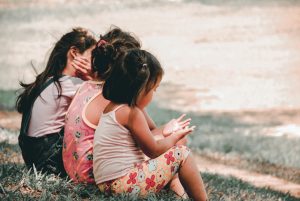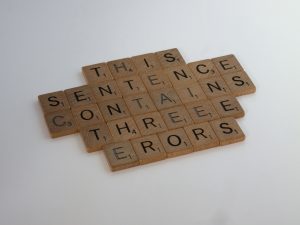By: Dr. Elke Schneider
What is culturally responsive instruction and why is it important?
Culturally responsive instruction (CRI) refers to teaching any content area in a way that infuses and honors knowledge about learners’ socio-culturally, linguistically, ethnically, racially, religiously, and socio-economically unique backgrounds. It not only makes the purpose of learning about specific content learner-relevant by connecting it to their cultural and linguistic frame of reference but also provides necessary language support and cultural explanations in interactive, authentic and carefully structured learning opportunities. In CRI, cultural, verbal and nonverbal components are made explicit to help diverse learners succeed. Therefore, the strategies below address these aspects.
Non-native speakers of English or English learners (ELs) present the fastest growing group of students in the US and in the Carolinas and are part of an increasingly diverse student population that requires CRI. Such instruction provides ELs with explicit guidance on how to orally communicate effectively in social and academic settings.

Effective CRI is based on a strong rapport with ELs. It unlocks EL’s motivation to overcome challenges based on language and acculturation needs. In collaboration with ESOL teachers, one can find out about ELs’ schooling background, home life, and possibly any key experiences ELs may have had prior to entering a content area teacher’s classroom that may impact learning success such as traumatic experiences coming to this country or any non-academic strengths that could be utilized to motivate learning content.
Why is it important to focus explicitly on oral language development?
Oral language skills provide the basis for proper development of all other academic skills including listening, reading, and writing skills. Native speakers develop oral language skills during the first five to six years of their lives before learning to read and write. However, ELs moving into the new culture later in life, must acquire oral, reading and writing skills fast all at the same time and are forced to participate in state testing from the start without any accommodations.
What constitutes oral language skills?
Developing social and academic oral language skills includes culture-specific verbal and nonverbal skills that require years to reach native speaker quality. It takes approximately 2-3 years to develop social oral language skills needed to engage properly in social settings such as recess, or after school experiences. Academic oral language needed to verbalize and reflect on academic content takes at least seven to nine years. Both types of oral language skills require not only proper command of vocabulary and sentence structures but also of culturally specific nonverbal skills like gestures, postures, eye contact, proper pausing, body distance from speakers, and tone and volume of voice to make oral communication effective.
The following selected strategies are specifically geared towards ELs and focus on academic language skills development but can be implemented with all learners.
Strategies for culturally responsive academic oral language instruction
- Make the purpose of an oral exchange about a topic clear and relate it to ELs’ world of reference. Ways to do that are: (1) Start a motivating dialog about a picture or short film clip that is relevant to ELs and thus prompts personal connections and opinions about a topic; (2) Ask students to share a personal experience to help them see the purpose of a content area task; (3) Show concrete items or ask students to bring in an item that represents something that helps them relate to a topic in dialog with peers.

- Plan for routine pair and group discussions prior to or after listening to teacher presentations, viewing or reading tasks
Routinely infusing oral academic dialog opportunities allows ELs to practice those structures. Generally, infuse 5 minutes of oral processing for every 3 minutes of teacher talk. Cooperative learning dynamics as offered in think-pair-share orally or think-pair-share orally-write, think-write-pair-share orally or view (picture, video clip)- pair- draw information- share orally allow ELs to critically process information with their multicultural and multilingual frames of reference. For more details, see Zwier (2019).
- Explicitly teach effective dialog features and allow oral pair or small group practices. On posters and personal handouts for students, flow charts display academic dialog features. Among them are gestures and language structures to: (1) demonstrate active listening skills (2) ask for more details or clarifications, (3) share culturally comparative information, (4) make sure everyone has contributed a comment, (5) keep dialog partners on task, (6) Compare and contrast information, and(7) summarizing what was said. For details, see Zwiers (2019). Also, explicitly discuss how such oral features differ by allowing ELs to share how dialog patterns compare to their cultures. Highlight also how dialog structures change when talking to person of authority versus a peer.

- Explicitly teach vocabulary in common phrases and sentence structures along with nonverbal communication features.
After analyzing what key vocabulary and associated phrases are needed for ELs to engage in proper academic dialog about a topic such as the water cycle or facts that led to the Civil War, allow ELs to practice saying these key words before using them in context. For instance, ELs will not participate in dialog about the photosynthesis, if they are not comfortable saying the word. Therefore, repeated syllable-by-syllable practice of the word is important. The entire class can be engaged in doing so chorally. Teachers have students repeat a word like photosynthesis syllable by syllable. In the intonation and speed modeled by teachers, students repeatedly add one syllable to the next until they can say the entire word fluently. Then, it is used in common phrases (successful photosynthesis, failed photosynthesis) and sentences (A photosynthesis requires…, A photosynthesis occurs when….).Such essential vocabulary with common sentence structures are then collected on content specific vocabulary cards that allow ELs to draw mnemonic devices and references to their first language as needed (i.e. photo and foto mean the same in Spanish as in English). Other words with the same component (photograph, photographer) can be added to help expand vocabulary.
- Explicitly teach nonverbal communication features
Given that non-verbal communication constitutes about 85% of in person information exchanges, teaching non-verbal communication features explicitly along with the language structures is paramount. Brief role plays in which one student asks questions and the other one answers them can serve as a practice for verbal and nonverbal oral language features. Students can prepare written scripts or work from brief notes on cards. Such performance can to demonstrate gained knowledge while implementing proper eye contact, gestures, postures, tone and volume of voice. Students can role play interviews of experts on science facts, a historic civil rights movement leader or a character in a novel or a writer. For each scenario, proper nonverbal skills such as eye contact, tone of voice, gestures, or body language can be practiced.
The following resource offers many specific suggestions for content area
instruction including evaluation charts:
Zwiers, J. (2019). Next steps with academic conversations. New ideas for improving learning through classroom talk.
Information about different specifics about language characteristics of over 30 language:
Swan, M. & Smith, B. (2001). Learner language: A teacher’s guide to inferences and other problems. London, UK: Cambridge University Press.
About the Author

Elke Schneider (PhD) is professor for Literacy, Special Education, and Second Language Learning at Winthrop University and has worked in this field for 25 years. She has supported regional and statewide efforts in training teachers at all grade levels and content areas in meeting learning needs of English learners with research-evidenced practices.
